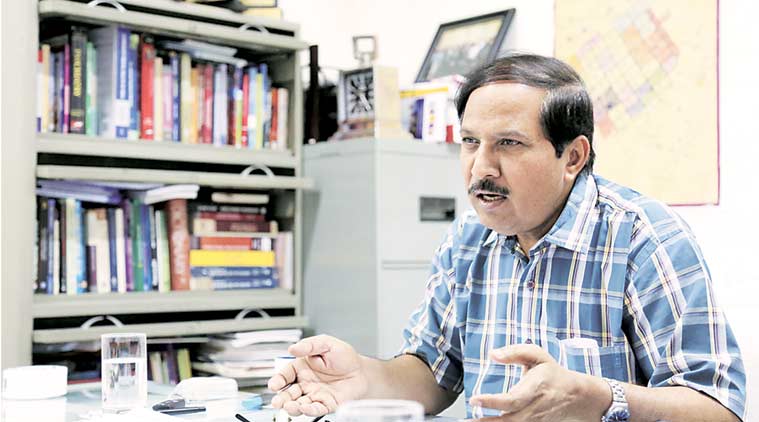Stay updated with the latest - Click here to follow us on Instagram
‘Students have become sensitive, impulsive & demanding’
In view of increasing number of suicides being reported in the Tricity and concerns regarding depression, Dr B S Chavan, head, department of psychiatry, Government Medical College and Hospital (GMCH), Sector 32, talks on the need to understand the issue on a broader perspective
 Dr B S chavan
Dr B S chavan
You have been attending to patients in the department of psychiatry ever since it was set up two decades ago. What trend have you observed in patients who seek treatment? Is there still inhibition among people?
Earlier, people with milder cases of stress, adjustment issues or marital disputes would hesitate in visiting a psychiatrist because of stigma. Many of them made requests that if we can see them outside the hospital or in their office. In the past 20 years, this has changed a lot. A lot of people coming to us these days may not have a major mental ailment, depression or schizophrenia, but are undergoing a difficult phase in their life.
Studies conducted by the department indicate that on an average 100 cases of suicide are reported in the city every year. But, the affected age group has changed over the years.
Yes. The number of suicide attempts made by young students is on the rise. Students have become very sensitive, impulsive and demanding. Whenever their demands are not met, they resort to giving threats. The intention may not be to kill, but sometimes, we have seen that it was a threat that was so serious that it led to his/her death. A young child committing suicide is a warning sign.
How do you view the mental health of youth in 2016?
Today, youngsters have a lot of issues. In a recent interaction with students of Class IX to XII in a private school, we saw that every girl and boy had something to share and mostly, it was about relationship issues be it break-up in relationships or frequent nagging by parents to not sit with or talk to a specific boy or a girl. Some have even gone to the extent of saying that our parents are our enemies and they do not understand us. Generation gap between parents and children is widening. Today’s students are under more stress than it used to be 20 years ago. Firstly, because more students at a younger age are indulging in relationship issues and second, because they spend more time on Internet and cellphones and less time with family.
There is a significant section of migrant population in Chandigarh and studies pointed high prevalence of suicides among them.
Migrants who come to Chandigarh for work and live on the outskirts of the city in slum colonies were found to be under a lot of stress. The suicide rate was much higher and so was the substance abuse. May be, they got attracted to the city, came with big dreams, but faced more difficulties, housing problems and others. They had pressure of getting work and cost of living is high, leading to stress.
Do you see significant cases of drug abuse in the city?
Yes. Out of that, the most worrying sign as a mental health professional is that substance abuse, particularly alcohol and smoking, are on the rise among young girls and this has happened in the past 5-8 years.
What can be done to address the issue of drug abuse?
Most importantly, they must be aware of hazards and complications of substance abuse. Recently, Punjab and Haryana High Court directed Haryana, Punjab and Chandigarh to design a curriculum to be taught in schools and colleges to educate students about consequences of drug abuse. We are working on that.
Depression continues to remain one of the most misunderstood terms in the society today. How you think people should understand it?
There is a difference between feeling sad and depressed. All of us feel sad for couple of hours or days, and then we come out of it. This is not depression. It is when, for days together, you lose interest in day’s activity and feel inability to feel good. There are a lot of good things happening around you, but you do not think they are of any importance to you. Getting up, brushing, meeting parents, interacting with your child, those things also do not interest you. There is complete loss of interest, loss of pleasure, a feeling of sadness, you feel lethargic and you get negative thoughts, and you think life is of no worth. Everything is useless. You feel as if you are a burden on the family. These thoughts bother you, and create negative feelings. This is depression.
If a family member is under depression, how does the family take care of the person?
There is confusion among people. First thing that come to people’s mind is that, everything is alright- he has enough money, goes to a good school, good job, then there should be no depression. It is a misnomer. Depression is both internal and external. When it is external, there is stress, we identify the stress. But, when it is internal, that means it is in the brain. The situation is that our mind needs a normal level of chemicals, called neuro-transmitters. When there is a disturbance in these neuro-transmitters, the person’s thinking starts getting affected.
Would you advise people having these symptoms to seek medical treatment or counselling?
It depends. Some people just need counselling, but others might need medication also. The best thing about medication is that, these medicines are the safest, they do not have any side-effects, and they are safer than antibiotics. They do not lead to any addiction. Some of them may be treated with meditation or yoga.
Are some people, who are under depression, reluctant to accept that they are under depression?
Yes. Firstly, they feel puzzled, on why they should be depressed. Secondly, some people have apprehension in taking medication. They feel that medication might lead to addiction, dependence, and they will not be able to stop it.
What is the most common problem that is seen among patients?
Depression, stress and anxiety and adjustment problems either at office, college or with parents, friends.
What has been the most challenging problem to address?
These days, we find marital discord to be the most challenging. Somehow, the acceptance of other person is not there. There is more autonomy and they feel that, they have their own life, why should the other person dictate terms. The husband sticks to his point, the wife sticks to her point. Somehow, they do not reach a level of understanding on consequences. In some cases, a daughter/son joins the therapy and during the course of treatment, we realise that problem is somewhere else.
Do you think we need more psychiatrists today?
If we talk of country as a whole, there is acute shortage of psychiatrists. Luckily, Chandigarh has adequate number of psychiatrists. But, if we look at percentage of people coming to us from outside Chandigarh, for example, PGI attends 60 per cent of patients from other states; GMCH-32 sees 40 per cent of people coming from outside. So, we need more psychiatrists.
How does the city fare in terms of facilities available for people with mental or physical disabilities?
We are way ahead than other states in terms of facilities for mental or physical disabilities. In 2008 and 2013, Chandigarh was rated as the best in the country in terms of facilities we have. The best example has been Government Rehabilitation Institute for Intellectual Disabilities (GRIID), where there are more than 400 children with various disabilities studying under one umbrella.
What is being done for rehabilitation of patients after initial treatment?
If we talk about facilities which we have for mental illness, the focus has been on acute care, which might be just 5 to 10 per cent of the total care; rest 80 per cent is rehabilitation, when the family feels that they do not have the time and capacity to do something. A facility has been set up in Sector 32, Disability Assessment Rehabilitation and Trial (DART), where we try to engage patients, make them learn a new skill or find a suitable job for them.







